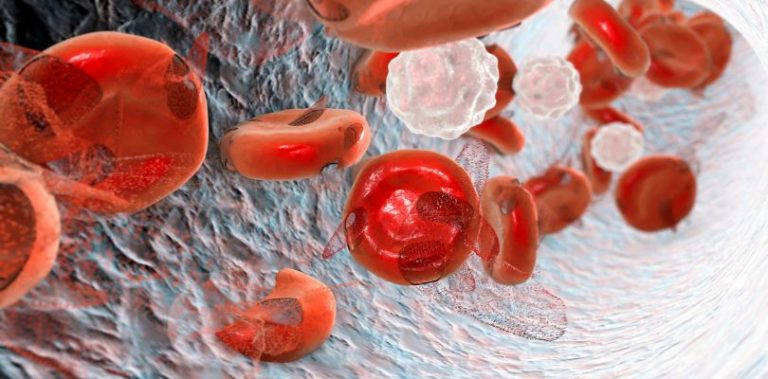Unveiling the Link
Immune thrombocytopenia (ITP) is an autoimmune condition known for its paradoxical relationship with blood clotting. Despite a significant reduction in the number of platelets – which are essential for blood clotting – individuals with ITP can experience an increased risk of clotting events, such as deep vein thrombosis (DVT). However, some approaches can help prevent these blood clots from occurring. In this article, we will explore foods and drinks that can help reduce the risk of thrombosis, discuss what ITP is, what causes it and the link between ITP and clotting. In addition, we will also look at the treatment options available, including PANZYGA as a medication used to treat ITP by providing high levels of antibodies to help regulate the immune system.
Foods for Blood Clotting Disorders
Omega-3 Fatty Acids
Omega-3 fatty acids, found in fish such as salmon, mackerel and sardines, are known for their anti-inflammatory properties and their role in maintaining cardiovascular health. These fats have been shown to support platelet function and reduce the risk of thrombosis.
Whole Grains
Whole grains are a rich source of dietary fiber, vitamins and minerals. These nutrients are known to enhance blood lipid profiles and can thus help to prevent clots by improving overall vascular health.
Related Search Topics (Ads)
Berries
Berries, like blueberries and strawberries, are high in flavonoids and vitamin C, which promote strong blood vessels and improve blood flow.
Dark Chocolate
Dark chocolate, in moderation, contains flavonoids that can improve platelet function and reduce inflammation, offering potential benefits in the context of a clotting disorder.
Green Tea
Green tea is lauded for its catechins, antioxidant compounds that may inhibit clot formation by relaxing blood vessels and improving endothelial function.
Garlic
Garlic contains allicin, known for its antiplatelet properties, potentially helping in the reduction of clot risk.
Turmeric
Turmeric and its active compound, curcumin, have anti-inflammatory and anticoagulant effects, which could be beneficial in managing clotting disorders.
Red Wine
Red wine contains resveratrol, which has been associated with heart health and a lower risk of clot formation due to its antioxidant properties. However, it should be consumed in moderation.
Ginger
Ginger has salicylate, a compound that can act as a natural anticoagulant, helping to prevent clots.
Cinnamon
Cinnamon is another spice that may have blood-thinning properties due to its cinnamaldehyde content, though more research is needed to understand its role in clotting disorders.
Understanding Immune Thrombocytopenia (ITP)
ITP is a disorder characterized by an abnormally low platelet count, which increases the risk of bleeding and bruising. In ITP, the immune system mistakenly targets and destroys platelets, the cell fragments that are crucial for normal blood clotting.
The causes of ITP are not fully understood, but it can be triggered by infections, certain medications and immune system dysfunctions. Chronic ITP might persist for years, while acute ITP is more commonly seen in children and often resolves on its own.
The Link Between ITP and Increased Risk of Blood Clotting
Surprisingly, patients with ITP are at risk of both bleeding and clotting complications. Research indicates that while low platelet counts should typically reduce clotting potential, the platelets in individuals with ITP can be “hyperactive”. Hyperactive platelets are more likely to form clots, potentially blocking blood vessels and leading to conditions like DVTs. Increased inflammation and damage to the lining of blood vessels, which can occur in ITP, might also contribute to a higher risk of clotting events.
Treating ITP and Managing Clotting Risks
The management of ITP is designed to raise platelet counts to safe levels, reduce the risk of bleeding and manage any increased risk of clotting. Here are some common treatment options for ITP.
- Steroids: Corticosteroids are often the first line of treatment to dampen the immune system and slow platelet destruction.
- Immune globulin: Intravenous immunoglobulin (IVIG) can temporarily boost platelet counts by modifying the immune response.
Thrombopoietin Receptor Agonists: These medications stimulate the bone marrow to produce more platelets. - Immunosuppressants: In cases where steroids are ineffective, medications that suppress the immune system can be employed.
- Platelet transfusion: In severe cases, especially if significant bleeding is occurring, transfusions of platelets are used.
- Splenectomy: Surgical removal of the spleen, the site where many platelets are destroyed, is an option when other treatments fail.
- PANZYGA: PANZYGA, also known as Immune Globulin Intravenous [Human] - ifas, is a medication utilized in the treatment of ITP. It works by supplying elevated levels of antibodies to assist in the regulation of the immune system.
Connecting the Dots
The management of ITP and its associated clotting risks requires a delicate balance, integrating medical interventions with supportive lifestyle adjustments to achieve the best outcomes for patients. The evolving understanding of the dietary influence on blood clotting suggests that nutrition could play a significant role in individualized patient care strategies for ITP.

